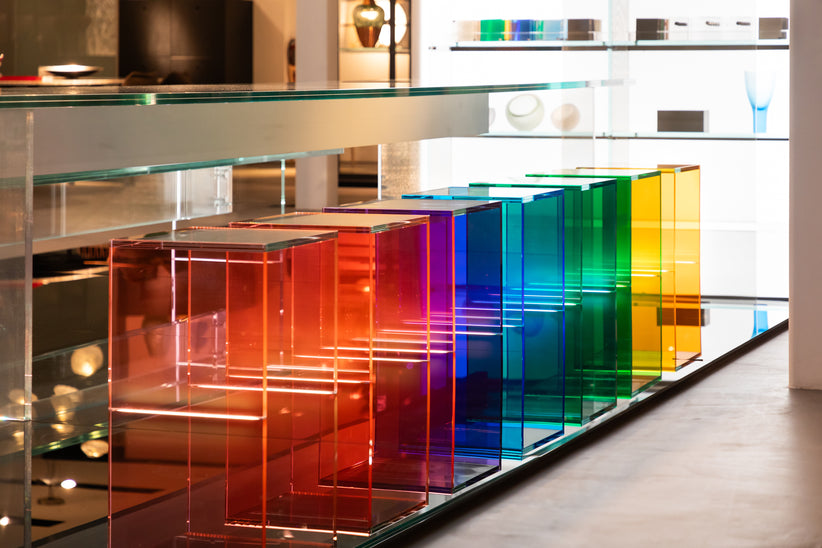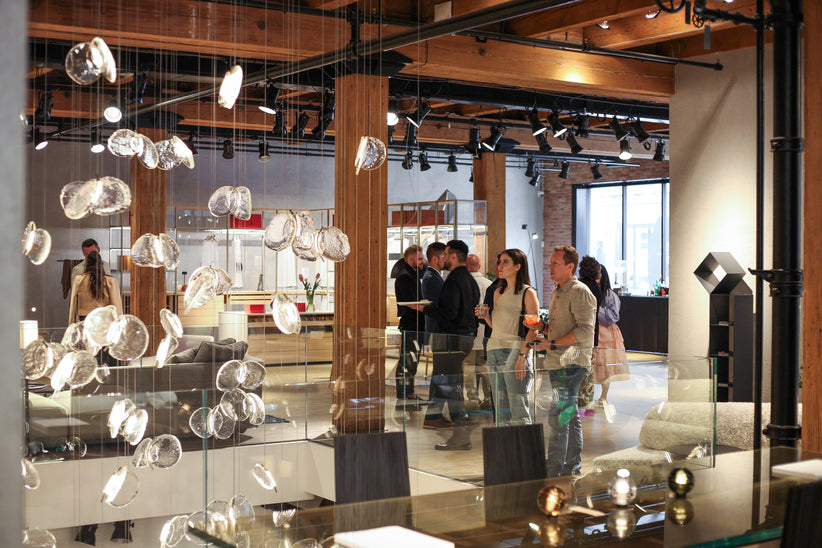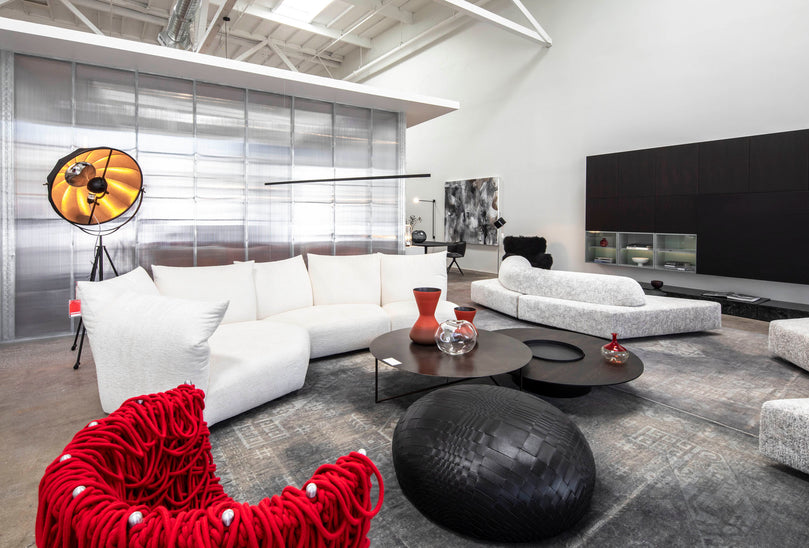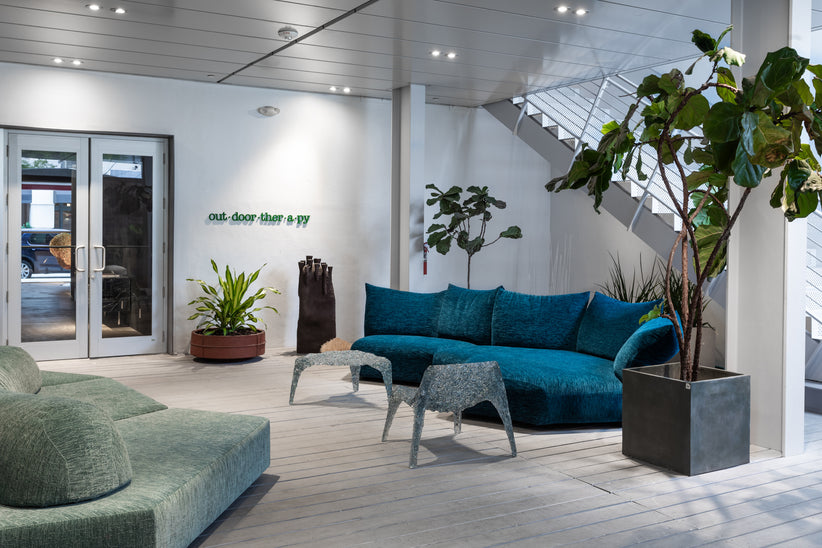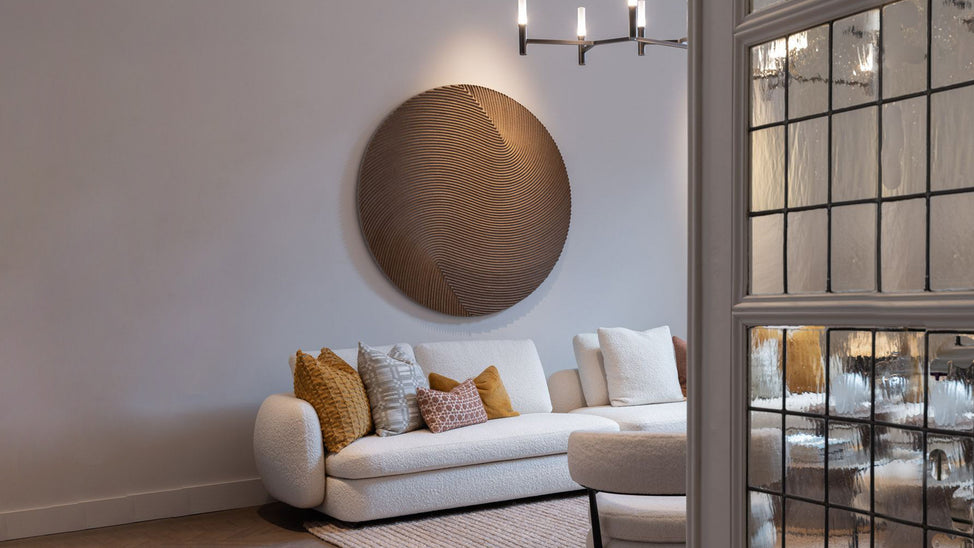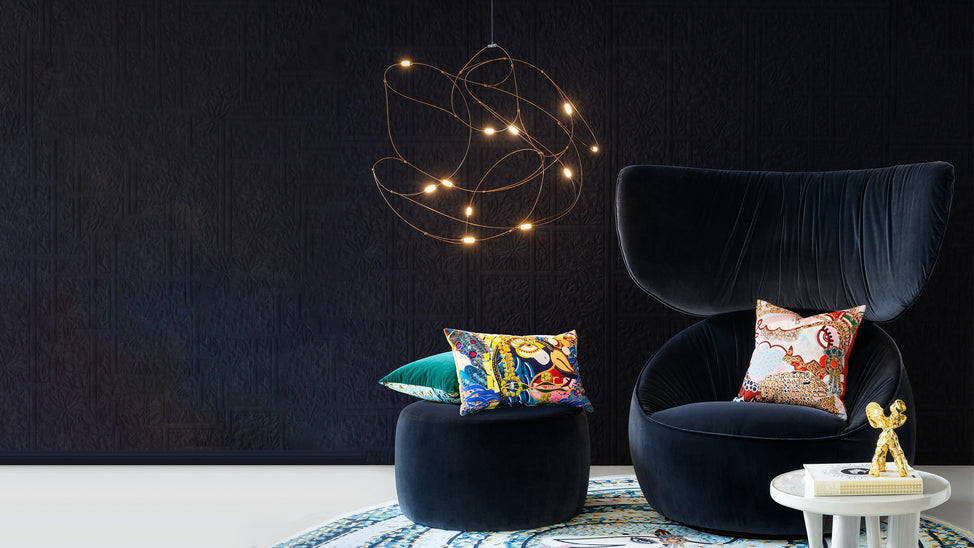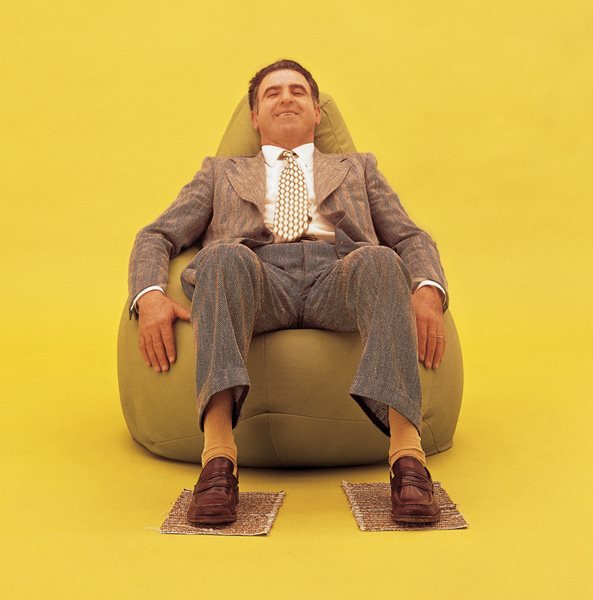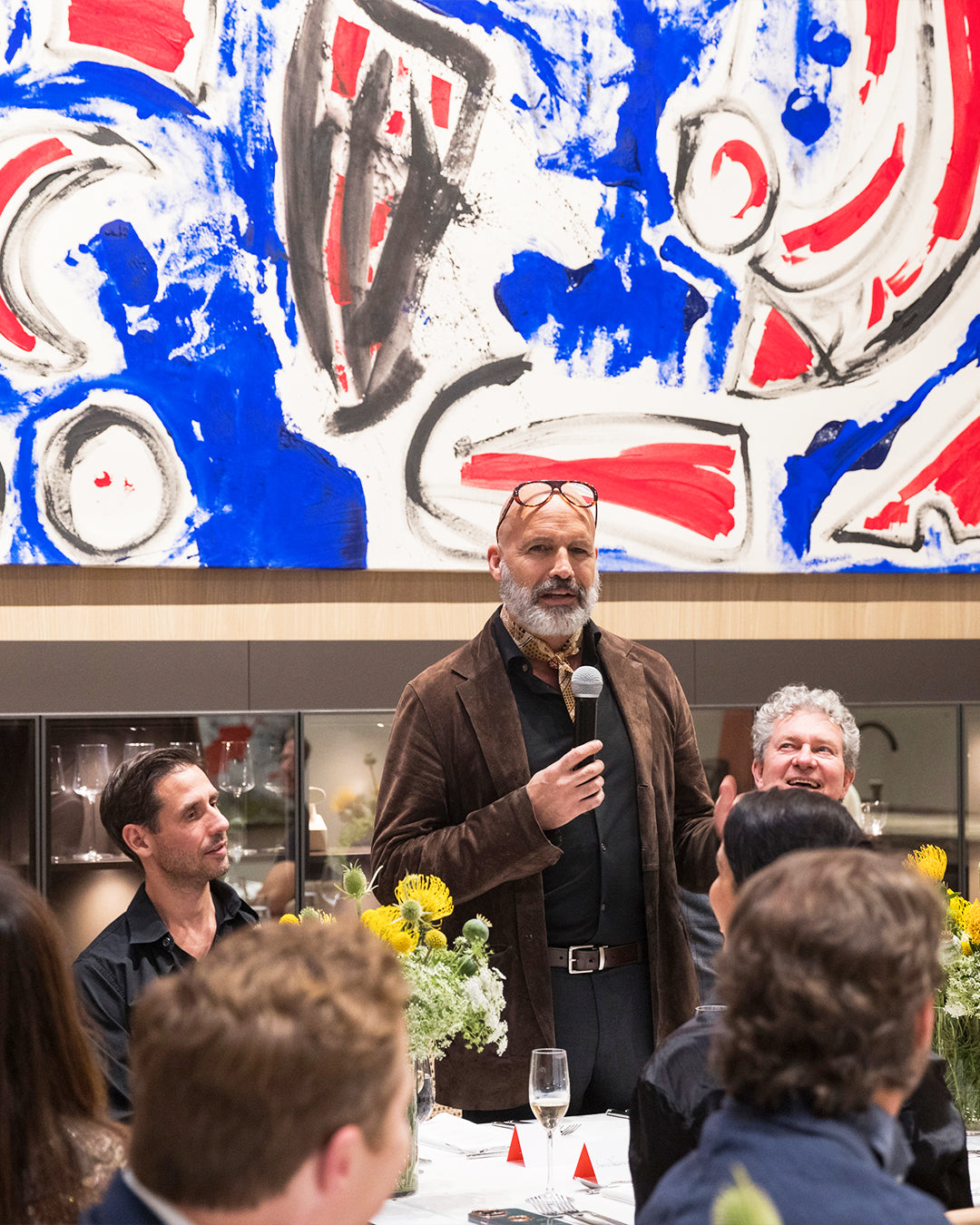From ancient times to the bustling of today’s hurried world, well-designed seating has long gifted us with respite and comfort, whether dining, working, socializing or taking a moment of much deserved repose. With the rise of mass production and an adjustment to the daily rituals of life in the home, the 20th century in particular saw a great many developments in the welcoming of elegant and useful chairs, crafting a vibrant market for durable, versatile, and unique works that blend with the home as inviting members of the family, beloved and personal.
Discover our collection of Icons of Design
Today we take a glance at 10 timeless icons of 20th century design—chairs that reflected design trends of the times, contributed positively to the evolution of modern and contemporary furnishings, give insight into historical contexts, and still to this day bring joy and beauty to residences and commercial spaces all over the world. Whether offering insight into the technological advancements and societal values of their time or highlighting a designer’s unique approach to form and function, the one-of-a-kind chairs are symbols of innovation and luxury, highlighting a novel perspective on aesthetics and usability while continuing to influence contemporary furniture and design trends with the inspired poetics of the best in modern and contemporary design.
4 Chaise Longue à Réglage Continu (1928)
Le Corbusier, Pierre Jeanneret, and Charlotte Perriand for Cassina
In the early 20th century, the birth of the Modernist Movement witnessed a shift from the elaborately decorated styles of the past to a focus on functionality, simplicity, and a return to the essentials, sleek, streamlined, and inviting. An icon of this era that remains relevant to this day includes the 4 Chaise Longue à Réglage Continu, or the LC4, designed by Le Corbusier, Pierre Jeanneret, and Charlotte Perriand in 1928 and making global waves as a balance of comfort and geometric purity when exhibited at the Salon d’Automne in Paris in 1929.
A masterpiece of design, this relaxing chair epitomizes luxury as it conforms to the natural curves of the body and echoes the design principles of Le Corbusier and the early Modernist Movement, addressing a relationship of form and function that inspired countless subsequent works and earned a well-deserved place in the design collection at MoMA, New York.
Zig Zag Chair (1934)
Embracing clean lines, interesting geometries, and eschewing unnecessary ornamentation, the De Stijl Movement of the early 20th century enlivened modern art and design with novel shapes and timeless appeal. A seating icon that emerged from this movement is the Zig Zag chair by Gerrit Rietveld, historic with a Z-shaped silhouette made of a single piece of wood and pioneering as one of the first cantilevered seats ever created.
Its simple design made it conducive to mass production, inspiring a democratic ethos to overall modern production as it explored the limits of materials and construction techniques. With angles that are invigorating and lines that oscillate gracefully, the Zig Zag chair remains a delightful addition to many contemporary interiors, a piece of design history that complements a myriad of personalities and styles.
Standard Chair (1934)
Jean Prouvé for Vitra
With a robust focus on structural integrity and a lissome aesthetic, Jean Prouvé’s designs and architecture imagined modernism as industrious and functional, a balance of strength, stability, and beauty. A landmark chair, innovative for its use of steel and wood, the Standard embodies the minimalist design and functional approach of his historic furniture, with a timeless edge that leaves it versatile for private residences and public institutions alike.
A symbol of modern design with a back leg profile inspired by an aircraft wing, the Standard chair remains a prime example of how ingenuity and adaptability results in work that is as beautiful as it is functional.
Eames La Chaise (1948)
Charles and Ray Eames for Vitra
As modernist principles evolved to include mid-century modern designs in the 1940s and 1950s, an interest in the flowing, sculptural forms of organic design balanced the industrial focus of the early modernist movement. Designers like Charles and Ray Eames made judicious use of natural materials and sinuous, curving shapes, illustrating how great design can be both sculptural and functional.
Designed for a competition sponsored by the Museum of Modern Art and the Museum Design Project, Inc., Eames La Chaise stretched the boundaries of furniture design with an exploration of new materials and techniques. The elegant fluidity of the work, inspired by Gaston Lachaise’s sculpture “Floating Figure,” made it a stunning icon of organic design, inspiring future work as an emblem of innovation and historical significance.
Wishbone Chair (1950)
Hans Wegner for Carl Hansen and Son
Enduring, elegant, and attractive, the Wishbone Chair celebrates the triumph of craftsmanship with a wooden Y-shaped back and an innovative seat made of more than 120 meters of paper cord. A modern icon of Danish furniture in production since 1950, this simple yet comfortable chair is distinguished for its organic form inspired by chairs of the Chinese Ming Dynasty while remaining solidly modern with structural support and unique textural elements.
One of Hans Wegner’s most celebrated works, the Wishbone continues to resonate today as a best seller for homes that pride themselves on sophisticated luxury and effortless detailing.
Panton Chair (1960s)
Verner Panton for Vitra
During the 1960s, Pop Art and space age aesthetics dominated the visual landscape, with bold colors and unique, curvaceous forms finding space in furniture produced at the time. A midcentury icon that not only embodied this movement but also proved timeless with its captivating simplicity and revolutionary design is the cleverly cantilevered Panton Chair, a modern classic that to this day graces homes with culture and style.
As the first chair to be crafted entirely from a single piece of molded plastic, a novel material at the time, the Panton Chair possesses a bold, fluid form and exhibits surprising ergonomic comfort. A renowned influence on countless furniture designs, this stackable chair is part of many prominent museum collections, a modern symbol of design that is both technologically innovative and visually striking.
Sacco Bean Bag Chair (1968)
Gatti, Paolini, and Teodoro for Zanotta
As the 1960s edged closer to the 1970s, personal freedom and non-conformity transformed the cause du jour, a shift that turned away from the rigorous forms and linear air of modernism and rather embraced a counter-cultural spirit. Radical Design in Italy demonstrated this move toward flexibility and adaptability, and epitomizing this anti-design movement emerged the Sacco chair—the first bean bag chair ever created.
With an unstructured shape inspired by piles of snow that could embrace the body with extreme comfort, this emblematic chair soon became a contemporary icon found in art, fashion, and pop culture. Recognized with multiple awards for design excellence, this unique chair can be seen in museum collections across the globe. In one’s home it exudes comfort and supports a relaxing, cozy environment that harmonizes with multiple styles of interior.
Cab Chair (1977)
Mario Bellini for Cassina
Yet another icon of contemporary design, the Cab Armchair was conceived as an extension of the body, and was the first of its kind to feature a self-supporting leather frame, inspired by the relationship between the human skeleton and the skin. Recognized as a global icon of enduring design, it continues to influence furniture designs today as a masterpiece of craftsmanship and innovative construction with no external bolts or permanent fastens, and a streamlined aesthetic that illuminates any space with beauty and comfort.
Historically significant and unmistakably current in versality and charm, the Cab Armchair remains a signature piece in the Cassina collection, set to elevate any home with character, artfulness, and poise.
Wink Chair (1980)
Toshiyuki Kita for Cassina
During the 1980s, postmodernism introduced a playful expressiveness to design popularized during that time. The challenge became a balance between unique and unusual forms and enduring qualities of ease of use and eye-catching allure that would set the timeless apart from the trendy.
One iconic piece that blurs the line between playful sculpture and functional furniture, the whimsical and the endearing, is the Wink Armchair—a dynamic seating experience that holds historical significance for its role in postmodern furniture and innovative design. A blending of Eastern and Western design philosophies, Wink is both multifunctional and adaptable, laying low to the floor like traditional Japanese seating with a seamless integration of versatile aesthetics and ergonomic design.
A true stand out in any contemporary home, Wink is also part of MoMA’s permanent design collection, a culture icon that is distinguished and memorable.

Air Chair (1999)
Jasper Morrison for Magis
Following a decade of expressive forms that could at times straddle the line between the interesting and unusual and the chaotic, the 1990s welcomed what became known as a “New Simplicity,” where the sleek and the streamlined emerged from new, innovative production techniques and more sustainable design practices.
The Air Chair became an icon born of a new air-molding technology called gas injection, which resulted in a structure as light as air, with angles and curves that ensure maximum comfort and a lightweight construction for optimum durability. Known for a focus on function and simple elegance, the Air Chair is now a classic that paved the way for the use of polypropylene in contemporary designs. Exhibited widely and held in the permanent collection of many museums and institutions, this chair proved groundbreaking for its versatility, durability, and affordability.
Enjoy 15% off on our Icons of Design Collection
June 2025


